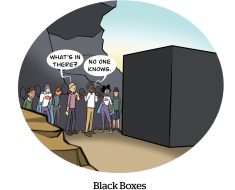Authored by Kesava Reddy, Chief Revenue Officer, E2E Networks Ltd.
Generative AI is a branch of artificial intelligence that can create original content, such as text, images, videos, and audio, based on data and algorithms. It has the potential to revolutionise the way advertisers create, distribute, and measure their campaigns, as well as the way consumers interact with and respond to them.
Generative AI is already being used by some of the leading brands and platforms in the world, and reports predict that it will have a massively positive impact on productivity. According to a report by McKinsey, Generative AI could contribute up to $4.4 trillion in annual global productivity, with marketing and sales being one of the major beneficiaries. Another report by ASCI estimates that generative AI could generate up to $150 billion in annual revenue for the advertising sector by 2027.
How does Generative AI help advertisers create more engaging, personalised, and effective campaigns?
Hyper-Personalisation
Generative AI technologies can treat consumer data as its knowledge source, and analyse not only purchase history but also online behavior, preferences, and even social media interactions, and craft ads tailored for a specific user.
By using open-source LLMs like Mixtral 8x7B or Llama2 deployed on advanced GPUs, along with a technique known as RAG (Retrieval-Augmented Generation), an AI stack can easily be built that queries a product catalog and generates a personalised ad based on the user’s preferences, interests, and online behaviour.
In the near future, hyper-personalisation in advertising would ensure that each consumer feels seen and understood, fostering a deeper connection with the brand.
Creativity Unleashed
Generative AI models are capable of augmenting the creative workflow by helping create unique on-brand images, visuals and audio. An image synthesis AI known as Stable Diffusion can be fine-tuned on existing brand images, and then harnessed to generate creative visuals that advertisers can use. The power of this AI comes from the fact that it can be controlled through simple text prompts and a set of parameters.
It is now also possible to generate unique video clips from a single image using Stable Video Diffusion, which can form the building block of creative ad videos, and transform the ad creation workflow.
In fact, I expect that we will see some unique ad creatives emerge in 2024, which would have been extremely expensive to produce in the recent past.
Efficiency Redefined
Generative AI technologies do not just enhance creativity, or help us understand data in our language; they are also highly cost effective and efficient. Right from market research to the final act of delivering creative campaigns, generative AI touches upon the entire workflow, brings efficiency, and drives down cost.
For instance, consider the cost and effort it would take to create a voiceover and music for an advertising campaign. In the past, this would take days to produce, if not weeks. Now, with voiceover generation technologies like BarkTTS, and audio synthesis AI like AudioCraft, it is possible to streamline the entire audio workflow in a way that is efficient and cost-effective.
Historically, technology had helped with distribution. With Generative AI, it is simplifying the creative process itself.
Customer Segmentation and Personalisation
Generative AI technologies can be used to go beyond demographic data; it can also classify preferences based on psychographic and behavioral insights. Large Language Models (LLMs), combined with an emerging technology known as Vector Databases, can be used to segment and cluster users on a range of parameters, and allow marketers and advertisers to explore user preferences using semantic connections. Consequently, the content and visuals presented to each segment are not only personalized but also align with the unique aspects that drive consumer decision-making, fostering a deeper emotional connection between a brand and its audience.
Shaping Tomorrow’s Advertising
The future of advertising is bright, powered by the boundless potential of Generative AI. It’s a future where ads become less like interruptions and more like personal experiences, where brands connect with us on a deeper level, and where creativity has no limits.
The integration of generative AI will not only amplify the impact of campaigns, but also empower marketers to navigate the complexities of a diverse and dynamic consumer landscape. As we embrace the synergy of technology and creativity, the future of advertising is poised to be more personalised, efficient, and resonant than ever before.


![[2310.04270] A Comprehensive Evaluation of Large Language Models on Benchmark Biomedical Text Processing Tasks [2310.04270] A Comprehensive Evaluation of Large Language Models on Benchmark Biomedical Text Processing Tasks](https://aigumbo.com/wp-content/uploads/2023/12/arxiv-logo-fb-235x190.png)
